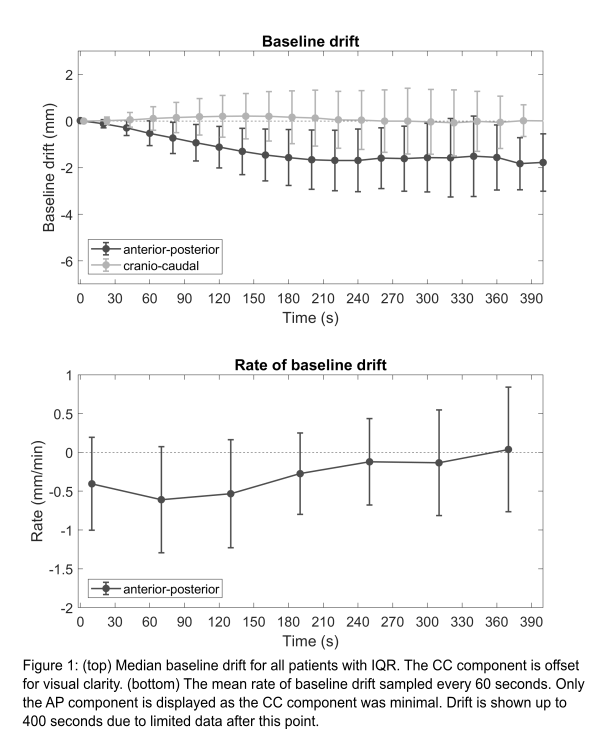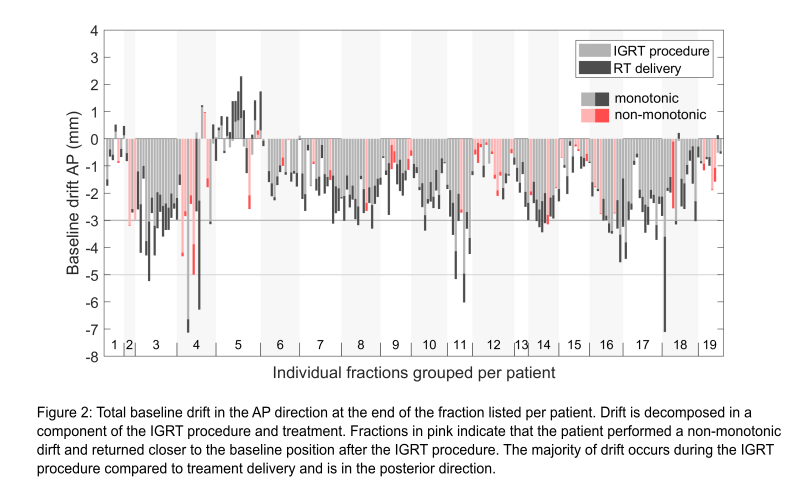Surface guided intra-fraction motion monitoring of delivery process in a closed-bore gantry linac
Laurence Delombaerde,
Belgium
PO-1693
Abstract
Surface guided intra-fraction motion monitoring of delivery process in a closed-bore gantry linac
Authors: Laurence Delombaerde1,2, Saskia Petillion2, Caroline Weltens1,2, Tom Depuydt1,2
1KU Leuven, Department of Oncology, Leuven, Belgium; 2UZ Leuven, Department of Radiation Oncology, Leuven, Belgium
Show Affiliations
Hide Affiliations
Purpose or Objective
New closed-bore linacs allow for
highly streamlined workflows and fast VMAT or IMRT treatment delivery. We
measured patient motion during every step of the workflow: image acquisition
and evaluation and during treatment delivery using surface scanning.
Material and Methods
Nineteen patients treated for
breast, lung or esophageal cancer were prospectively monitored from the end of
setup to the end of treatment delivery in the Halcyon linac (Varian Medical
Systems) for a total of 221 fractions. Motion of the chest was tracked by way
of 6DoF surface tracking at 4 Hz by an in-house built surface guidance system.
Cyclic breathing was removed from the signal using a moving average filter.
Baseline drift and rate of drift were determined. The contribution of drift
during image acquisition and evaluation (IGRT procedure) relative to the total
drift was determined. The influence of fraction number, patient and fraction
duration were analyzed with multi-way ANOVA.
Results
Median fraction duration was 4 min
48 sec including the IGRT procedure (kV-CBCT acquisition and evaluation).
Overall baseline drift of the surface at the end of the fraction was -1.8 ± 1.5
mm in the anterior-posterior, -0.0 ± 1.7 mm in the cranio-caudal direction and 0.1 ± 1.8 mm in the medio-lateral
direction. In 31% of fractions baseline drift was over 3 mm and in 3.6% over 5 mm.
The rate of baseline drift was largest between 1 and 2 minutes after the end of
patient setup (during the IGRT procedure) namely -0.62 mm/min as shown in
figure 1. In 20% of fractions the patients’ position displayed non-monotic
behavior by returning to the baseline position after the IGRT procedure
resulting in a smaller drift at the end of the fraction. For all other
fractions the drift during the IGRT procedure was on average 75% of the total
drift, as shown in figure 2. Baseline drift was patient and fraction duration
dependent (p < 0.001), but fraction number was not significant (p = 0.33).


Conclusion
Even during brief treatment sessions
with a highly streamlined workflow of less than 5 minutes, patient baseline
drift is not negligible. Drift is largest during the initial 2 minutes after
completion of patient setup, during which verification imaging and evaluation
is performed. Surface scanning can detect patient motion during every phase of
the intra-bore workflow and will be invaluable for online adaptive treatments.